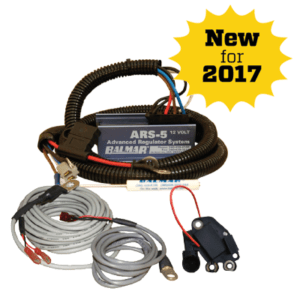I'm thinking about making the jump to a LiFePO4 house battery bank.
I don't have enough brain cells left to become an expert on the subject, so I'm asking folks like Warren and others who know the subject to tell me if I'm doing something stupid.
I hate buying from Amazon, but there are some relatively inexpensive options that have very high user ratings. I don't have enough boat bucks to get the very nice US-built systems like Battleborn.
I'm considering replacing 3 of my old 12V lead acid batteries (88 Ah each) with this 410 Ah beast:
It's an incredible capacity upgrade given the much higher real drawdown on LiFEPO4.
Other background info: I'm planning on keeping my Lead Acid starter battery. My relatively new Yanmar came with a big 120A alternator. I've got a relatively new ProMariner Battery Charger (ProNautic 1230P) 30 amp.
Given all of that, is this the best approach??:
Thanks in advance for any advice.
-Mark
I don't have enough brain cells left to become an expert on the subject, so I'm asking folks like Warren and others who know the subject to tell me if I'm doing something stupid.
I hate buying from Amazon, but there are some relatively inexpensive options that have very high user ratings. I don't have enough boat bucks to get the very nice US-built systems like Battleborn.
I'm considering replacing 3 of my old 12V lead acid batteries (88 Ah each) with this 410 Ah beast:
It's an incredible capacity upgrade given the much higher real drawdown on LiFEPO4.
Other background info: I'm planning on keeping my Lead Acid starter battery. My relatively new Yanmar came with a big 120A alternator. I've got a relatively new ProMariner Battery Charger (ProNautic 1230P) 30 amp.
Given all of that, is this the best approach??:
- Wire the battery charger, alternator, and solar so they charge the new house bank. Or I’ve heard I could fry my alternator going to LiFePO4, so maybe they should all be wired into the starter battery?
- Configure the battery charger so that it is optimized for LiFePO4 (if that is where it is wired)
- Get a DC to DC charger (like 30A Victron), and use it to charge the other battery bank
- Should I keep the A/B battery switch?
- I have an older Blue Sea battery State of Charge monitor, but it doesn't have a profile for Lithium banks. So I'm thinking of getting a Victron monitor
- I know people get religious about this, but I'm thinking of keeping my Windlass on the starter battery to avoid spikes, etc. that can fry electronics.
Thanks in advance for any advice.
-Mark
Last edited:




